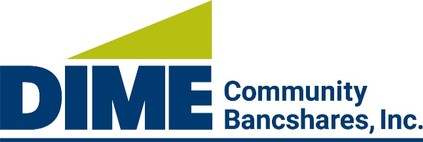Dividends per common share were $0.24 during the third quarter of 2022.
Book value per common share was $26.55 at September 30, 2022 compared to $26.41 at June 30, 2022. Tangible common book value per share (which represents common equity less goodwill and other intangible assets, divided by the number of shares outstanding) was $22.34 at September 30, 2022 compared to $22.20 at June 30, 2022. Excluding the impact of AOCI, the adjusted tangible common book value per share was $24.75 at September 30, 2022 compared to $24.01 at June 30, 2022 (see “Non-GAAP Reconciliation” tables at the end of this news release).
Earnings Call Information
The Company will conduct a conference call at 8:30 a.m. (ET) on Friday, October 28, 2022, during which CEO O’Connor will discuss the Company’s third quarter 2022 financial performance, with a question-and-answer session to follow.
The conference call will be simultaneously webcast (listen only) and archived for a period of one year at https://events.q4inc.com/attendee/927279052.
Conference Call Details:
Dial-in for Live Call:
United States: 1-844-200-6205
International:+1-929-526-1599
Access code:728364
Telephone Replay:
A recording will be available until Friday, November 11, 2022.
United States: 1-866-813-9403
International:+44-204-525-0658
Access code: 471079
ABOUT DIME COMMUNITY BANCSHARES, INC.
Dime Community Bancshares, Inc. is the holding company for Dime Community Bank, a New York State-chartered trust company with over $12.8 billion in assets and the number one deposit market share among community banks on Greater Long Island(1).
(1) Aggregate deposit market share for Kings, Queens, Nassau & Suffolk counties for community banks less than $20 billion in assets.
This news release contains a number of forward-looking statements within the meaning of Section 27A of the Securities Act of 1933, as amended and Section 21E of the Securities Exchange Act of 1934, as amended (the "Exchange Act"). These statements may be identified by use of words such as “annualized," “anticipate," "believe," “continue,” "could," "estimate," "expect," "intend," “likely,” "may," "outlook," "plan," "potential," "predict," "project," "should," "will," "would" and similar terms and phrases, including references to assumptions.
Forward-looking statements are based upon various assumptions and analyses made by the Company in light of management's experience and its perception of historical trends, current conditions and expected future developments, as well as other factors it believes are appropriate under the circumstances. These statements are not guarantees of future performance and are subject to risks, uncertainties and other factors (many of which are beyond the Company's control) that could cause actual results to differ materially from future results expressed or implied by such forward-looking statements. Accordingly, you should not place undue reliance on such statements. Factors that could affect our results include, without limitation, the following: the timing and occurrence or non-occurrence of events may be subject to circumstances beyond the Company’s control; there may be increases in competitive pressure among financial institutions or from non-financial institutions; changes in the interest rate environment may affect demand for our products and reduce interest margins and the value of our investments; changes in deposit flows, loan demand or real estate values may adversely affect the business of the Company; changes in the quality and composition of the Company’s loan or investment portfolios or unanticipated or significant increases in loan losses may negatively affect the Company’s financial condition or results of operations; changes in accounting principles, policies or guidelines may cause the Company’s financial condition to be perceived differently; changes in corporate and/or individual income tax laws may adversely affect the Company's financial condition or results of operations; general economic conditions, either nationally or locally in some or all areas in which the Company conducts business, or conditions in the securities markets or the banking industry may be less favorable than the Company currently anticipates; legislation or regulatory changes may adversely affect the Company’s business; technological changes may be more difficult or expensive than the Company
